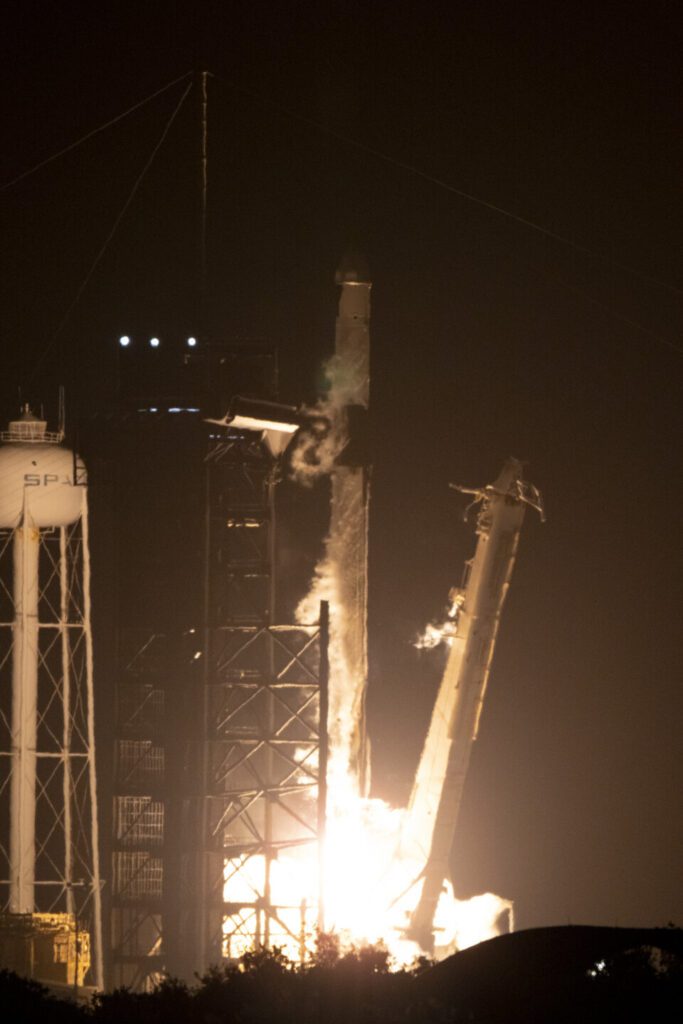On April 21st 2025, the European space agency ESA launched what is called the most advanced and accurate atomic clock in space and on the international space station “ISS”.
The atomic clock ensemble in space ACES left earth aboard the SpaceX Dragon CRS-32 cargo flight, part of NASA’s Commercial Resupply program, to the international space station ISS.
One day later, on 22 April, Dragon linked up with the ISS and ACES was installed and bolted to the nadir (Earth-facing) pallet of ESA’s Columbus laboratory (the external payload facility) which has been in orbit since February 2008 permanently attached to NASA’s Harmony node.
On April 28th, the engineers switched on the atomic clock ensemble in space ACES by which it entered a 6 months commissioning phase, until October 2025, to fine tune the clocks and radio links. Upon success, the mission is expected to last 30 months of science operations.
ACES marking a major milestone for European Science and International Cooperation in space
“The launch of ACES marks a major milestone for European science and international cooperation in space. With this mission, we are placing the most precise timepiece ever sent to orbit aboard the International Space Station, opening new frontiers in fundamental physics, time transfer, and global synchronization. ACES is a shining example of what Europe can achieve when we unite cutting-edge technology, scientific ambition, and strong partnerships”, says in the official ESA launch statement,Daniel Neuenschwander, Director of Human & Robotic Exploration at ESA.

What does ACES carry within?
ACES has 4 main components that makes it a scientific achievements and they are:
- PHARAO: cold atom cesium clock that is the main reference of this mission as it is accurate in detecting time on the long run.
- Space Hydrogen Maser “SHM”: hydrogen based clock that is accurate in detecting time in space on the short run and can support the data of PHARAO
- Frequency comparison and distribution package “FCDP”: which are electronics that compare signals and data from both clocks and give the accurate result.
- Microwave link “MWL”: it is a two way radio that transfers the timing and data between ACES and laboratories on earth.
How does ACES impact our day-to-day life?
The blended signals from “PHARAO” and Space Hydrogen Maser “SHM” is routed to Earth through a two-way Microwave Link accurate to about 100 picoseconds.
As the ISS completes about 16 orbits a day, ACES beams timing “ticks” accurate to 40 timing labs,now in a six-month commissioning phase, enabling those labs to fine-tune the clocks that steer GPS and telecom networks.
It tightens the synchronisation used by stock exchanges and power-grid controllers, and by comparing its slightly faster tick in weaker gravity with ground clocks deliver the most precise orbital test yet of Einstein’s prediction that “gravity slows time”.
ACES’s ultrasharp beat also opens a new window on Earth’s slow changes. A clock this stable can sense a 1-centimetre change in sea level or groundwater reserves, enabling geophysicists to detect gradual ocean rise, ice-sheet thinning, and land subsidence early enough to guide coastal-defence planning and sustainable water-management strategies.
The mission officially started one week ago, and if both clocks perform as planned and the mission succeeds, humanity will be witnessing a change in their daily life. The success of ACES will change what humans mean by “one second”.